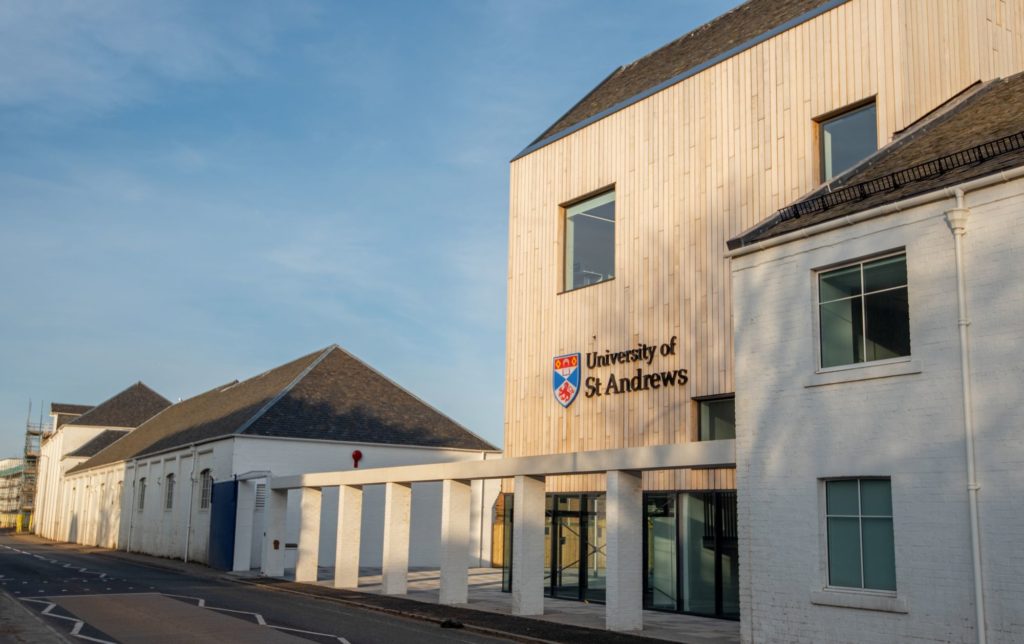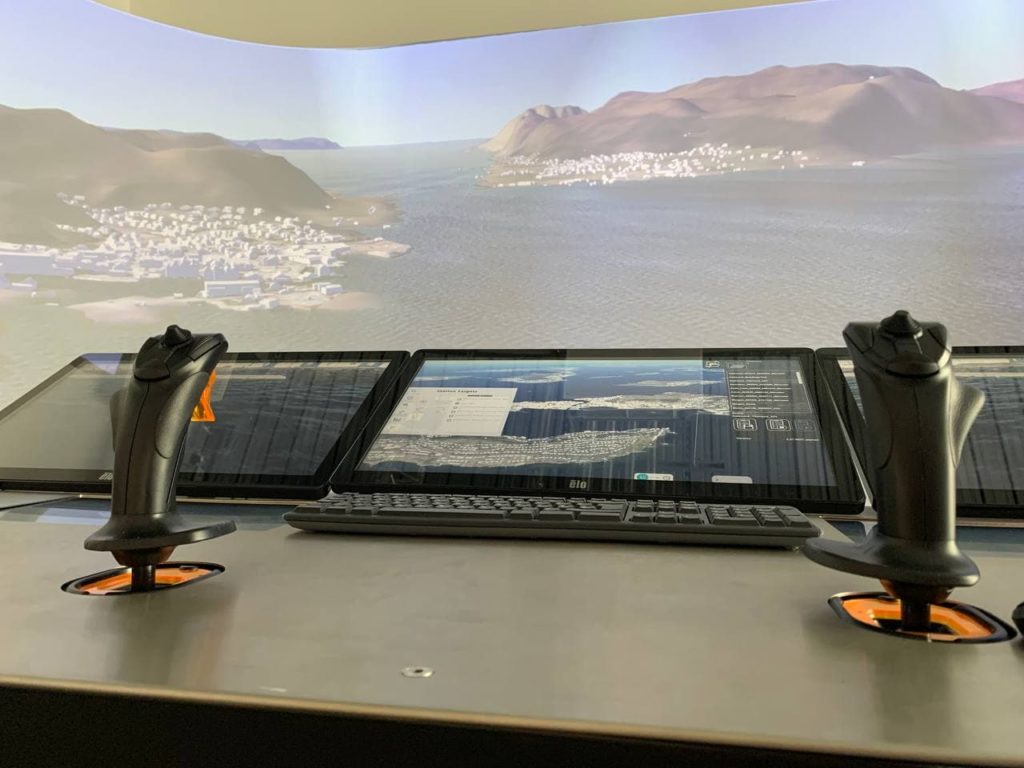Eden Campus: New Simulator Facility
This article is written by Maitreyi Tusharika, a fourth-year management student who is working as a COP26 Student Reporter Intern. She will be writing a series of articles over the next few months covering the different aspects of COP26 discussions and events.
At the heart of Guardbridge lies the University of St Andrews’ newest facility – Eden Campus – a hub for innovation and collaboration, and a space for various university service departments to work and meet within. At first glance, this would look like just another set of buildings in the university’s portfolio of projects and it might seem surreal that it has found its place on the outskirts of St Andrews, far away from the bubble of bustling students in town. But this choice of location has meticulous reasoning; it repurposes a site that once hosted a paper mill and distillery, it is located on the serene banks of the Eden Estuary, and it also provides employment to the local population in Guardbridge.

Eden Campus is spearheading a future of change. With sustainability forming a key focus of the university’s five-year strategy, we are on the course to become carbon neutral by 2035. It is worth nothing that the university is not settling for a one-stop answer to climate change problems, but is instead on a constant search for innovative solutions. The campus stands as a structural testimony to this, wherein amongst the clean energy operations like the biomass plant and ongoing solar PV project, there is an establishment of spaces for technological innovation and external enterprise.
This summer, one such addition – based in Walter Bower House (WBH)– is the D’Arcy Thompson Simulator Centre. In collaboration with deep water salvage company Deep Tek Ltd, the simulator serves as a way for researchers to make optimal decisions during field project implementations. The founder of Deep Tek Ltd – Moya Crawford- was kind enough to give me a tour of the facility at Eden Campus.

Located on the second floor of WBH, the Stretch Dome Simulator is hard to miss, with its massive concave screen spread across the length of a room. To complement it, three monitors and central mouse control are tabled at angles opposite to the screen. On entering, I was greeted by the icy blue landscape of a coast near Norway, with a simulated ship peering at the stretch of water beyond. Moments like these serve as a reminder of the rapid technological advancements that surround us.
Moya brings to Eden Campus decades of experience with deep water salvaging and is a published author for her work around the same. With this technology, she hopes to enable collaboration and calculated decision making on sustainability projects undertaken by the university. “It’s important to question everything”, she says, and the simulator can serve as a way to find answers to these questions. It allows individuals to explore different avenues and possibilities whilst researching solutions that they hope to innovate.
On the central monitor, she inputs the location of St Andrews, and virtually takes me around the grounds between the Golf Course and West Sands, demonstrating the geographical capabilities of the region that lays beyond. At this point, I am offered a turn to attempt navigation to Kilburn, a stretch of forest land near Eden Campus. After a few struggles, I shrug and stand back, and Moya moves the mouse to the destination with ease. We explore all this land as we stand in a room, and the size of the screen makes it easy to get lost into the distance for a moment or two.

Moya explains the potential use of this simulator to locate suitable land for our very own St Andrews Forest – a nature-based solution project that will aim to offset carbon emissions from student travel. The simulator enables the creation of multiple layers to duplicate any given geography – starting from land and building all the way through trees and natural diversities. There is so much potential within Scotland; unexplored natural realities that could bring us closer to a sustainable life that beats climate change. Technology like this can help us realise that dream, she explains.
The need for such a facility has become more apparent since the pandemic, as it omits the need to physically visit locations for research or exploration. Researchers can also use it to digitally collaborate from all across the world.
COP26 echoes a strong sentiment and need for long-term, impactful solutions. There’s a need to invest and innovate as much as possible in a way that is altruistic and furthers the agenda of sustainability for communities in an equitable manner. The importance of maximising the best use of technology to facilitate such a shift is central to progress, and solutions like this simulator, and Eden Campus will serve as a beacon of change and leadership.
